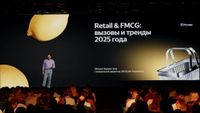In a rapidly evolving digital landscape, experts from the international mobile marketing agency Mobisharks, a part of Kokoc Group, have outlined significant trends shaping mobile marketing for 2025. Their insights suggest that while major shifts in the advertising market may not be imminent, the growth of OEM traffic and advancements in neural networks will redefine how brands engage with consumers.
According to the agency, video networks are set to receive a larger share of advertising budgets, reflecting a broader trend towards more engaging content formats. The experts anticipate that OEM traffic will become increasingly vital, particularly as brands look for alternative channels with minimal fraud risk. "The growing interest from clients, new advertising tools, and a huge audience of Android users in Russia make this source one of the most promising in 2025," they noted.
As the global market sees a rise in users of brands like Xiaomi and Huawei, new players such as OPPO and Realme are also making their mark in Russia. This shift signals a need for brands to adapt their strategies to reach these expanding demographics effectively.
In terms of creative content, the experts predict a noticeable increase in unique creatives that stand out from the typical monotonous banners and videos that often yield low conversion rates. The rise of user-generated content (UGC), particularly in combination with 3D motion animation, is expected to enhance engagement. However, the focus will remain on user benefits, discounts, and promotions rather than complex visuals. The agency emphasizes that short videos lasting six seconds or less will become the golden standard, as they effectively capture and retain audience attention.
Moreover, the trend towards interactivity and gamification is anticipated to continue. To attract users to app stores, marketers will increasingly leverage captivating video content. "Fast, effective formats capture and retain attention and provide maximum reach," the agency clarified.
As brands adapt to the high prevalence of Android devices in Russia, they will likely explore alternative platforms for audience engagement. The limited access to global services has accelerated the development of Russian app stores, opening new avenues for promotion and monetization.
In addition to the rise of OEM traffic, experts predict that other advertising tools, such as Telegram Ads, will gain traction, especially in light of recent changes in advertising legislation. Marketers are expected to shift their focus towards the quality of users and their lifetime value (LTV), moving away from traditional metrics like cost-per-install (CPI) and cost-per-action (CPA), which no longer fully reflect the efficiency of mobile marketing.
Meanwhile, the FMCG (Fast Moving Consumer Goods) sector is also undergoing significant transformations, as discussed at the Yandex Advertising conference titled 'Retail & FMCG Day.' Mikhail Burmistrov, the General Director of INFOLine-Analytics, highlighted that the FMCG market encompasses everyday products such as bread and beverages, as well as long-term items like groceries and cleaning supplies.
During his presentation, Burmistrov pointed out that seasonal product assortments are increasingly important. For instance, summer demands ice-cold drinks and ice cream, while autumn brings a need for stationery as students return to school. This seasonal focus is essential for retailers looking to optimize their offerings.
Interestingly, Burmistrov noted that hypermarkets are losing popularity compared to supermarkets and online delivery services. This shift is attributed to a growing number of single individuals who prefer smaller, more frequent purchases over large weekly shopping trips. Soft discounters are leading this trend, setting new standards across various retail formats, including convenience stores that cater to local neighborhoods.
Another trend gaining traction is the production of ready-made meals, which has become a key sales driver for many retail networks. This segment is reportedly growing faster than the hotel and restaurant sector (HoReCa), as busy consumers seek convenient dining options.
Within this context, Burmistrov emphasized that Russia operates under a predominant omnichannel consumption model, where consumers engage with brands across multiple platforms. The discussions at the 'Retail & FMCG Day' conference aimed to explore the evolution of sales strategies within this dynamic environment, highlighting the need for retailers to adapt to changing consumer behaviors and preferences.
As we look ahead to 2025, both the mobile marketing and FMCG sectors are poised for transformation driven by evolving consumer expectations and technological advancements. Marketers and retailers alike must navigate these changes strategically to remain competitive in an increasingly complex marketplace.



